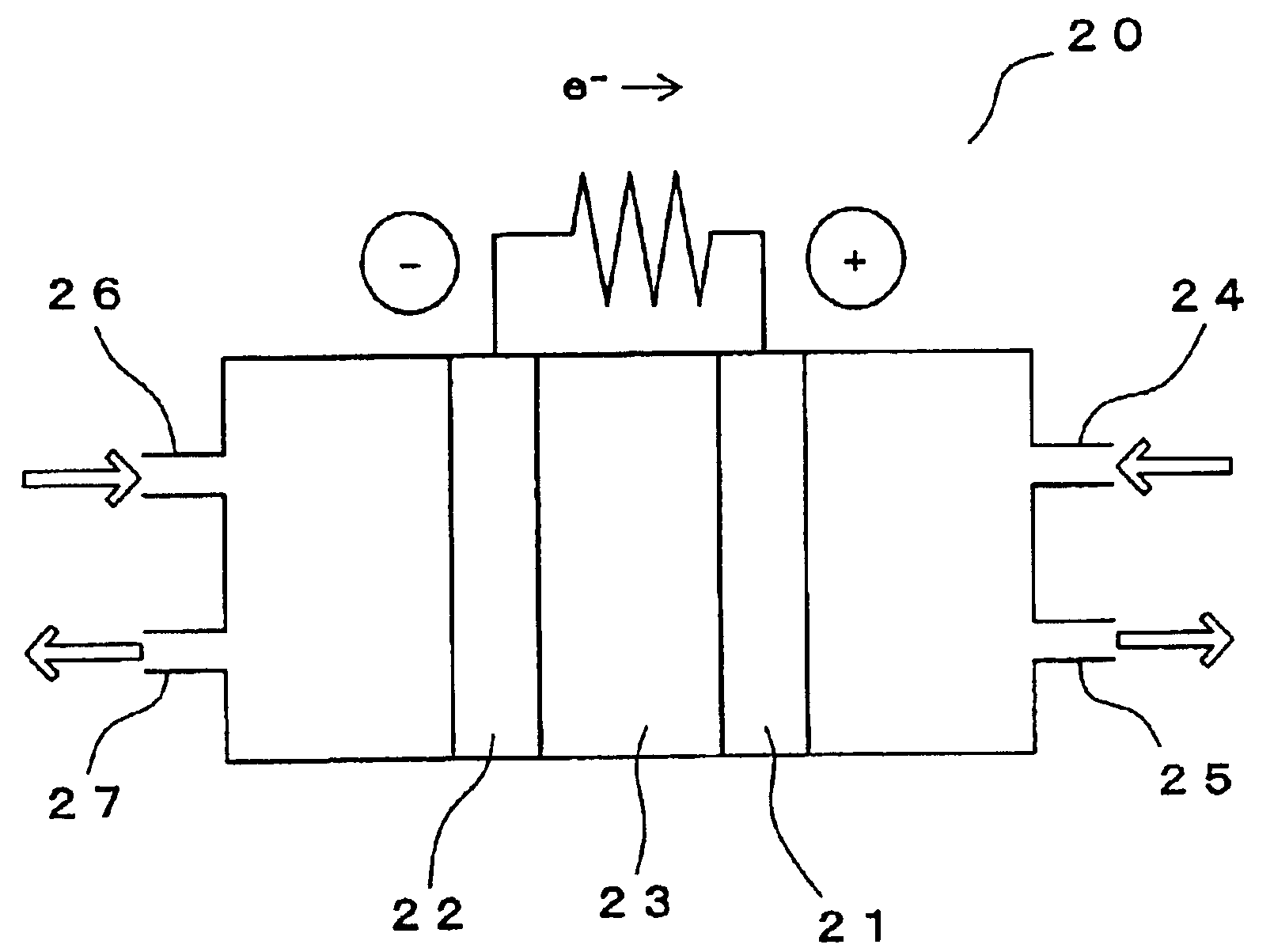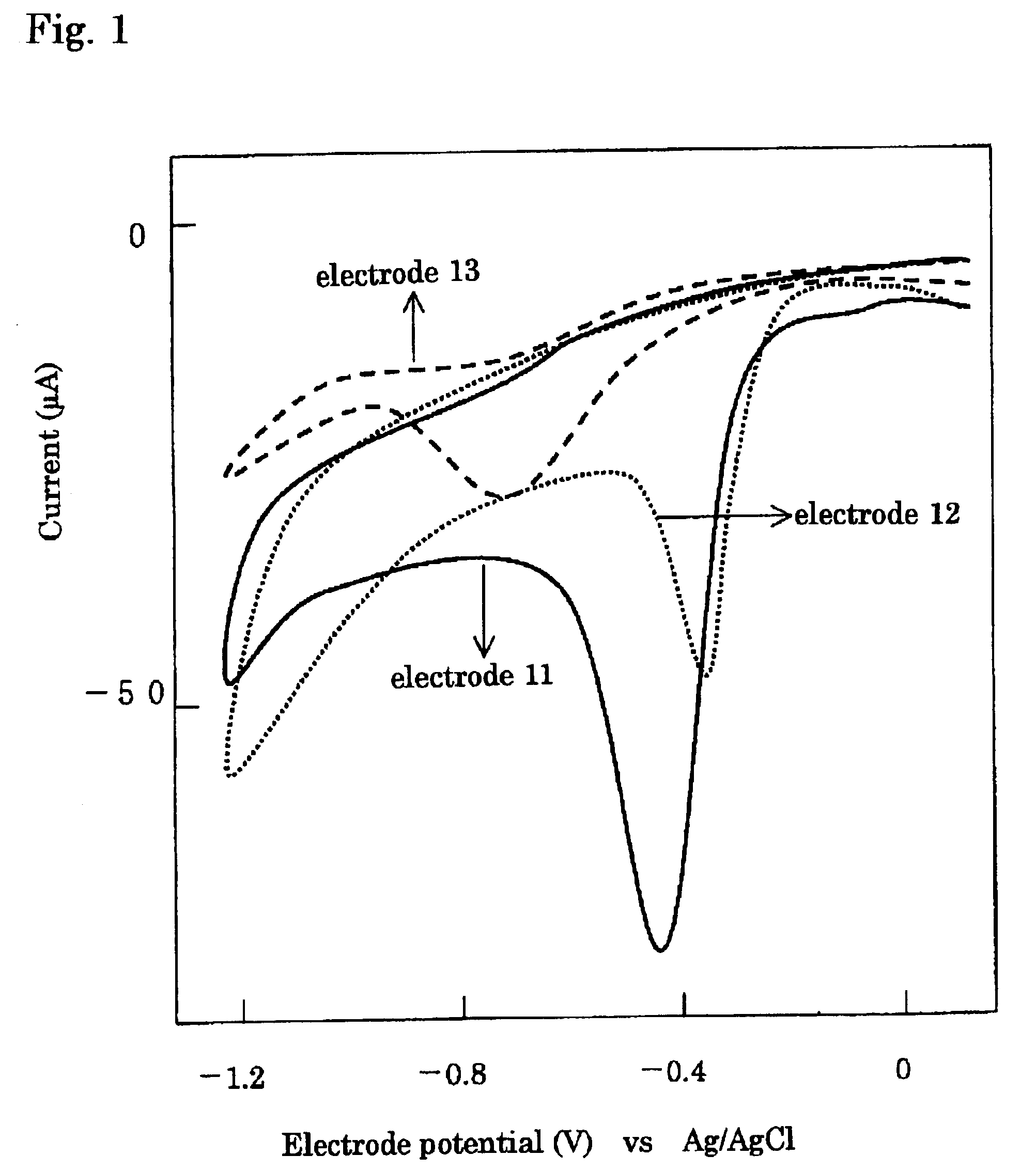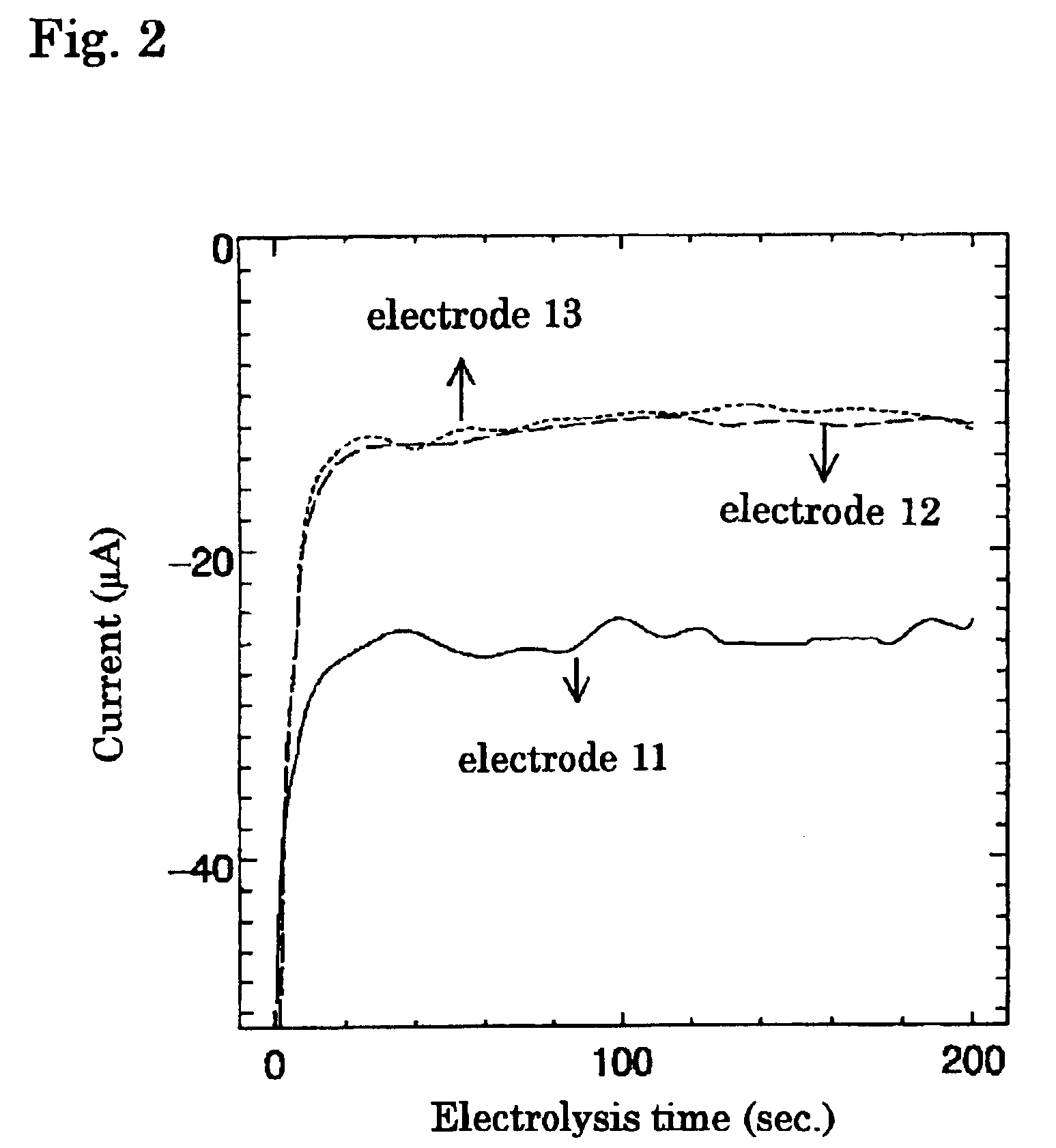Composite electrode for reducing oxygen
a technology of oxygen oxidation and compound electrode, which is applied in the direction of organic compound/hydride/coordination complex catalyst, physical/chemical process catalyst, cell component, etc., can solve the problem of difficult to know the content of a technology which is required for practical application, oxidation deterioration of the other, and ineffective catalyst type, etc. problem, to achieve the effect of suppressing oxidation deterioration, weakening oxidizing power and suppressing oxidation deteriorati
- Summary
- Abstract
- Description
- Claims
- Application Information
AI Technical Summary
Benefits of technology
Problems solved by technology
Method used
Image
Examples
example 1
(1) Preparation of Test Electrodes 11,12, 13, 14 and 15
[0054]Poly-cobalt-4,4′,4″,4′″-tetraamino phthalocyanine (p-CoTAPc) as the electrochemical catalyst A and γ-MnOOH (a mixture of Mn3O4 and Mn5O8) as the catalyst B were used. Test electrodes were prepared using glassy carbon (GC) having a diameter of 6 mm. The glassy carbon was a pellet having a thickness of 5 mm and a diameter of 6 mm; the pellet was buried in a sheath made of a polyimide resin, which had a diameter of 10 mm and a length of 80 mm, in a manner that one surface was connected with an electrode lead and another surface was exposed. GC having exposed face on which none was formed was referred to as the test electrode 13.
[0055]To a dimethyl sulfoxide (DMSO) solution in which 0.1 M of tetrabutylammonium phosphate was dissolved, 0.2 mM of cobalt-4,4′,4″,4′″-tetraamino phthalocyanine (CoTAPc) which has the structural formula indicated in the formula (1) was dissolved to prepare an electrolyte solution. Electrolysis was ca...
example 2
(3) Preparation of Test Electrodes 21 and 22
[0067]Test electrodes were prepared in the same manner as in the first example using cobalt-tetraamino phthalocyanine (CoTAPc) as the electrochemical catalyst A and γ-MnOOH (a mixture of Mn3O4 and Mn5O8) as the catalyst B and using glassy carbon (GC) having a diameter of 6 mm.
[0068]Five (5) μl of a solution in which 1 mM of CoTAPc was dissolved in N,N′-dimethylformamide (DMF) was added dropwise so as to cover the whole exposed face of the GC, and then, the GC was heated by warm wind for 2 hours to obtain the test electrode 22 which had CoTAPc on the GC surface. To 5 μl of an ethanol solution in which 0.05% by weight of Nafion was dissolved, 25 μg of γ-MnOOH powder was dispersed. The resultant solution was added dropwise so as to cover the whole face of the GC having CoTAPc; the GC was heated by warm wind to evaporate ethanol; 5 μl of the same ethanol solution was added dropwise, and ethanol was evaporated to obtain the test electrode 21 in...
example 3
(5) Preparation of Test Electrodes 31 and 32
[0072]Test electrodes were prepared in the same manner as in the first example using cobalt-hexadecafluorophthalocyanine (CoHFPc) which has the structural formula indicated in the formula 2 as the electrochemical catalyst A and γ-MnOOH (a mixture of Mn3O4 and Mn5O8) as the catalyst B and using glassy carbon (GC) having a diameter of 6 mm.
[0073]Five (5) μl of a DMF solution in which 1 mM of CoHFPc was dissolved in N,N′-dimethylformamide (DMF) was added dropwise so as to cover the whole exposed face of the GC; the GC was heated by warm wind for 2 hours; further, 5 μl of the same DMF solution was added dropwise; the GC was heated by warm wind for 2 hours to obtain the test electrode 32 which had CoHFPc on the surface.
[0074]Five- (5) μl of a DMF solution in which 50 μg of γ-MnOOH powder was dispersed was added dropwise once so as to cover the whole face of the GC; the GC heated by warm wind for 2 hours. Further, the afore-mentioned DMF soluti...
PUM
| Property | Measurement | Unit |
|---|---|---|
| reduction potential | aaaaa | aaaaa |
| two-electron reduction potential | aaaaa | aaaaa |
| diameter | aaaaa | aaaaa |
Abstract
Description
Claims
Application Information
 Login to View More
Login to View More - R&D
- Intellectual Property
- Life Sciences
- Materials
- Tech Scout
- Unparalleled Data Quality
- Higher Quality Content
- 60% Fewer Hallucinations
Browse by: Latest US Patents, China's latest patents, Technical Efficacy Thesaurus, Application Domain, Technology Topic, Popular Technical Reports.
© 2025 PatSnap. All rights reserved.Legal|Privacy policy|Modern Slavery Act Transparency Statement|Sitemap|About US| Contact US: help@patsnap.com



